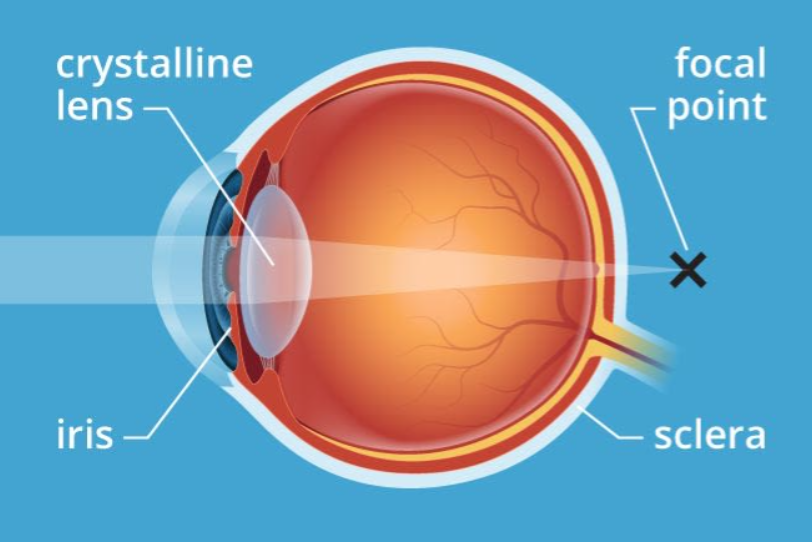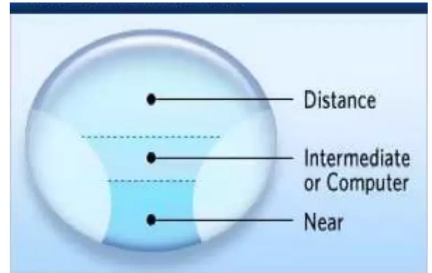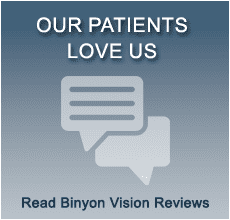If you’ve crossed over the 45 birthdays mark… you know what we’re talking about. For someone who was nearsighted and wearing glasses since 2nd grade, the experience was much different than I expected. I knew the blur of not being able to see in the distance, but this was weird. All of a sudden, my eyes wouldn’t focus when my kids shoved something close to my face to read. “Mom! What does this say?” would elicit this response – “Whoa… move that back a little bit.” When I thought things would get blurry- they didn’t- instead my eyes started to pull funny, feel strained and the natural instinct was to move my head back until ahhh… I could read.
My yearly eye exam confirmed – it was time for progressive lenses. I anxiously awaited the arrival of my first pair with a +1.00 add. After helping fit people with +1.75 to +2.50 add powers for years, this seemed like a baby step that probably wouldn’t make much difference. But to my surprise it did made a big difference! I’ve since graduated to a +1.25 add power as another birthday came and went and that strain feeling came back. The joy of this particular birthday change called presbyopia.
What is Presbyopia?
The lens of our eye (see image below) is actually flexible and along with the surrounding muscles, it changes shape to focus on objects at different distances. Presbyopia is an age-related condition when the lens and muscles connected to the lens become weaker, preventing it from moving into a shape that is able to focus at near distances. Like nearsightedness and farsightedness, presbyopia is a diagnosis of a visual acuity deficiency in the patient’s eyes.

How do Progressive Lenses Help?
Progressive lenses in eyeglasses are the most common treatment for presbyopia. A progressive lens is a line-free multifocal lens. In other words, there are multiple vision prescriptions incorporated into one lens for the wearer to be able to see clearly at multiple distances. Unlike traditional lined bifocals or trifocals, progressive lenses offer a seamless transition, allowing wearers to see clearly at varying distances. The same lenses allow one to see the far distance (driving or watching a movie), mid-distance (face-to-face conversation or looking at a computer) down to close up (reading a book or looking at a phone).
Take a peek at the diagram of a progressive lens below. It’s not completely accurate because it does look like 3 focal distances when in face there are infinite focal lengths for the wearer which progress from distance to near as your eyes look downward through the lens. The diagram clearly shows something important – the lighter, unidentified areas on each side of the lens. This is what we call a blending zone. The combination of manufacturing limitations and physics means this progressing zone through the lens does not extend all the way to the edges. That is a limitation of these lenses that can cause difficulty with adaptation to wearing progressives.

On the market today, there are several progressive lens manufacturers. The first lens was designed and released by a company called Varilux in the 1960’s. Thankfully there has been a lot of improvement in design and manufacturing during this time. Each company has a unique approach to creating this visual corridor of the progressive lens. We highly encourage you to understand all the options and benefits of the different types of progressive lenses.
How to select the proper Progressive Lenses
- Customization: At Binyon Vision Center, our experienced opticians take the time to understand your unique visual requirements. We offer personalized progressive lenses tailored to your lifestyle, ensuring optimal clarity and comfort.
- Lens Technology: Our opticians stay updated with the latest lens technologies. From anti-reflective coatings to blue light filters, we offer a range of options to enhance your visual experience and protect your eyes from digital eye strain. There has been much innovation in the world of progressive lenses, and we partner with the top lens manufacturers to provide the best, most effective lenses available. Our preferred progressive lens partner, Shamir, has an unmatched number of lens designs and invest highly in research and development to understand the wearer’s experience.
- Frame Selection: Our extensive collection of frames complements the style and preferences of every individual. Our knowledgeable staff can help you choose frames that not only look great but also accommodate progressive lenses seamlessly.
If your experience with progressive lenses has left you anything less than being thankful – we encourage you to explore more options. Lens designs continue to improve and with a better understanding of how they work, we hope they will be more successful for you. It’s unavoidable – that up close vision will go someday and being comfortable in the progressive lenses is something we would love to help you with!











